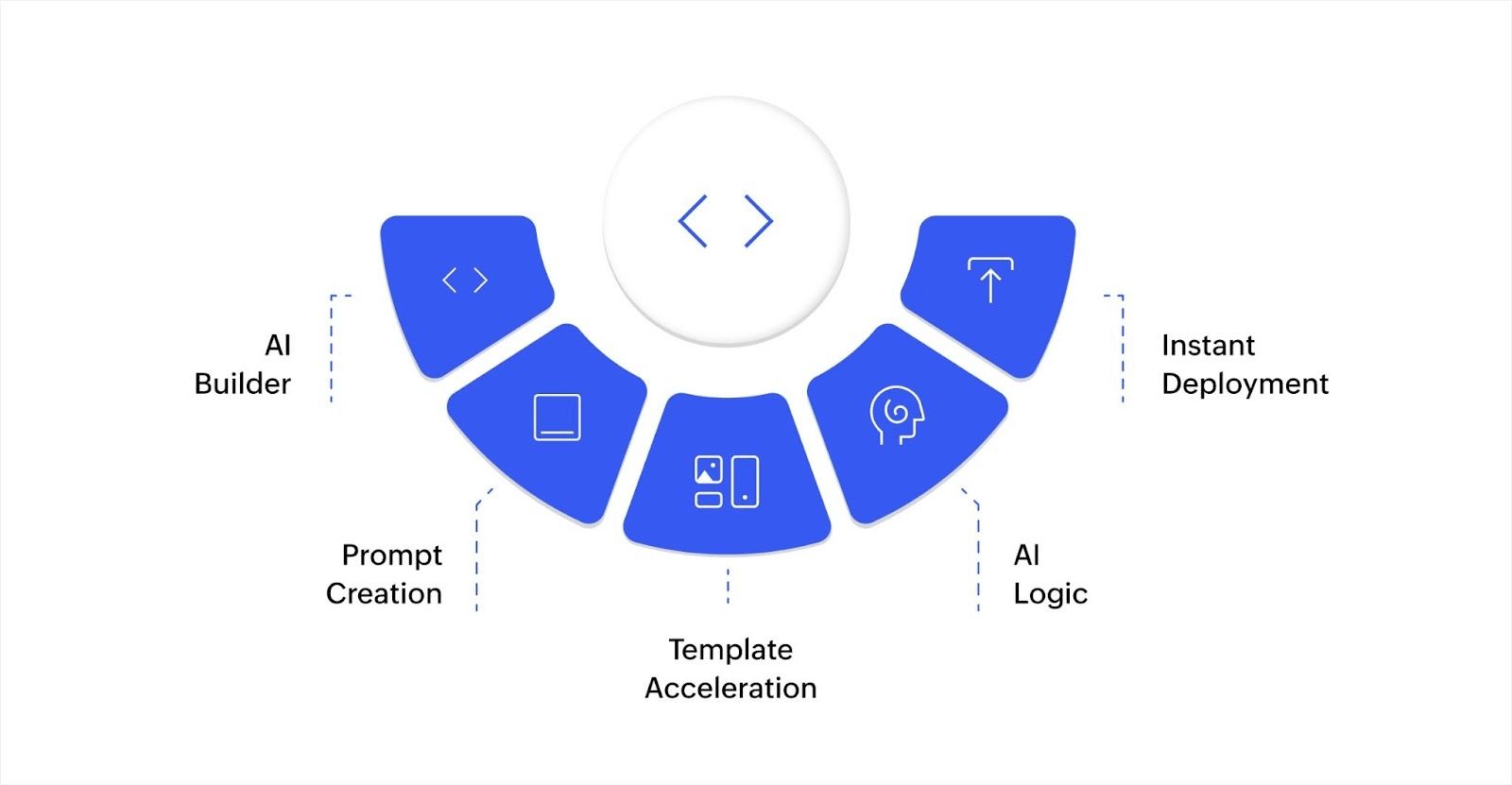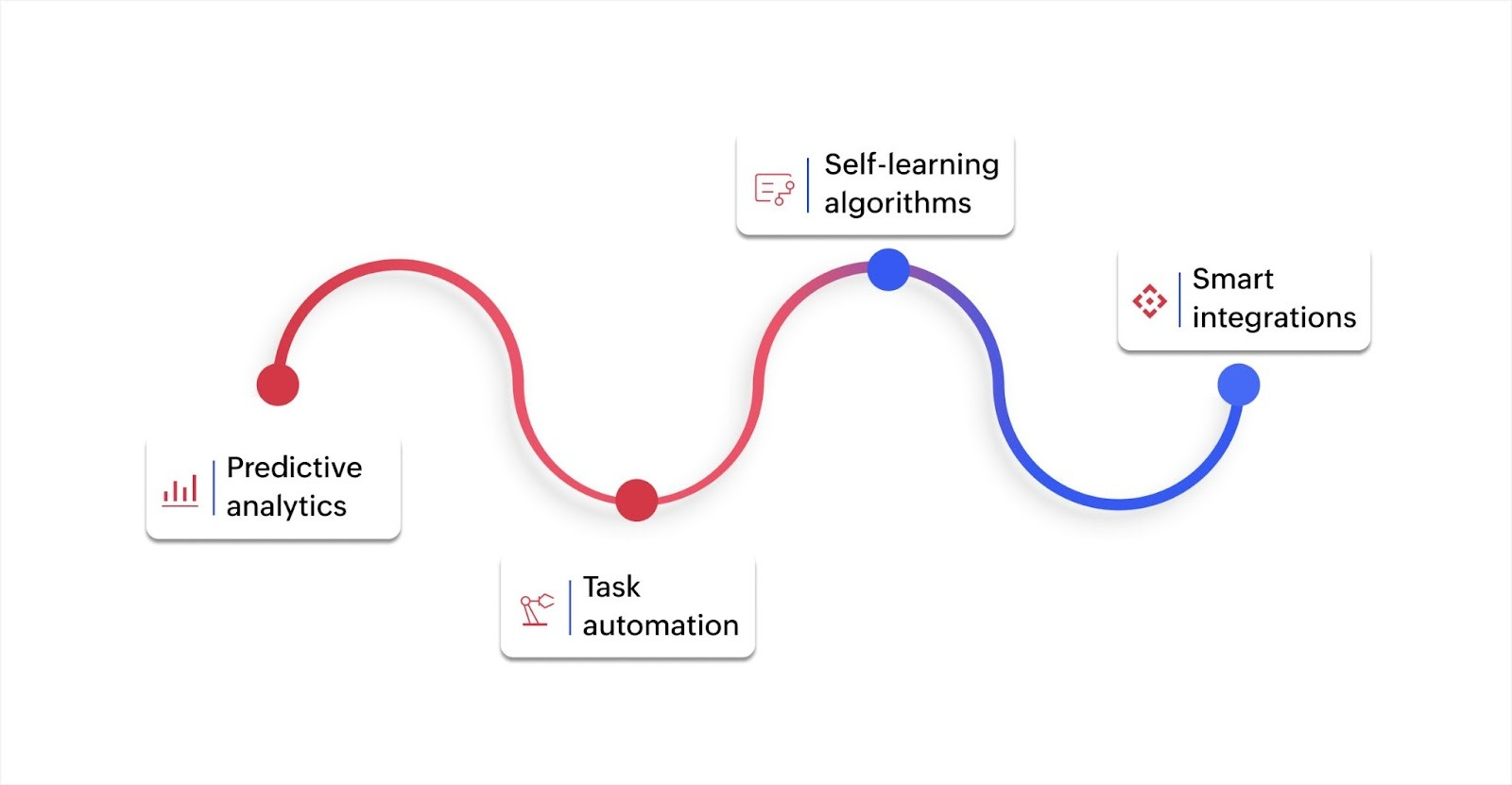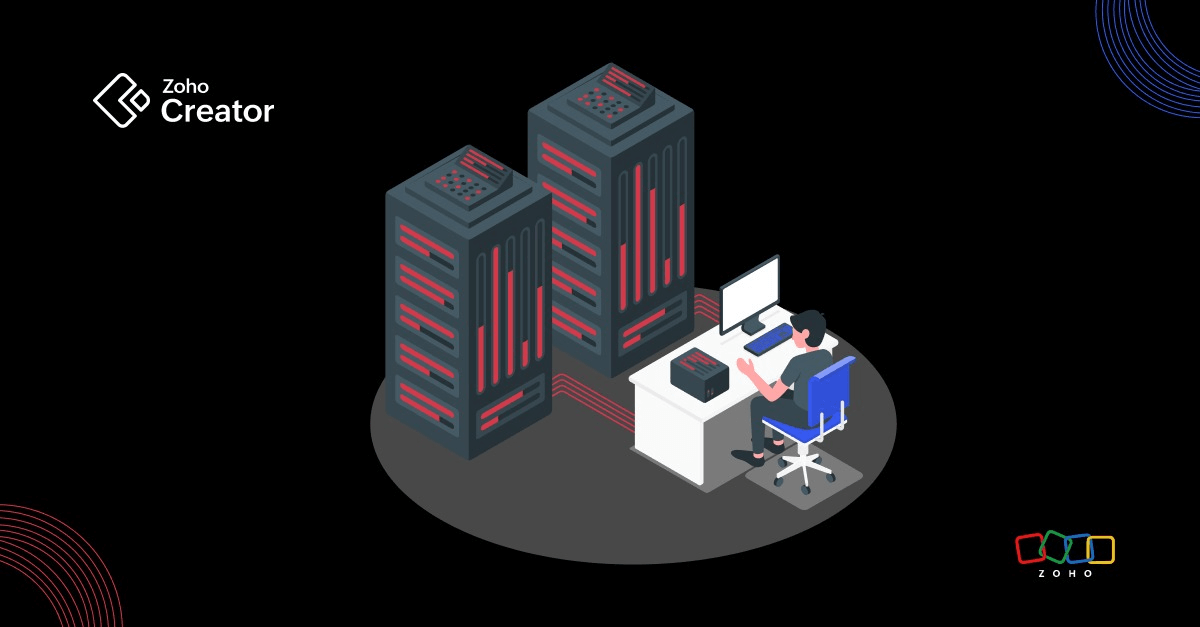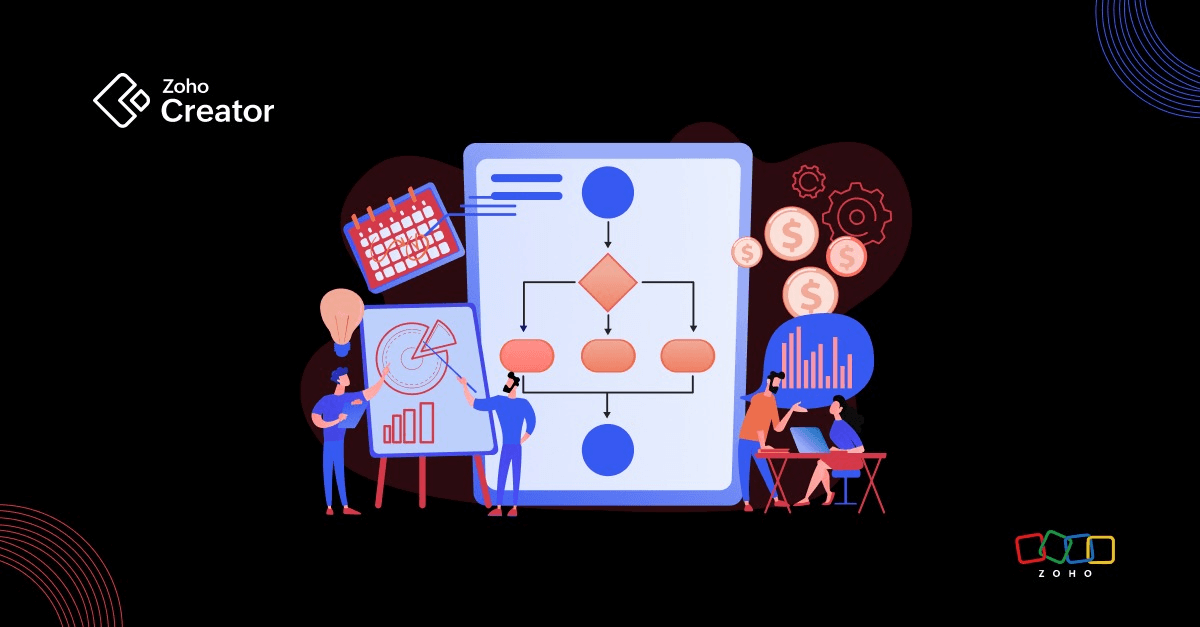- HOME
- Know Your Tech
- Vibe coding vs. AI-assisted low-code development: What sets them apart?
Vibe coding vs. AI-assisted low-code development: What sets them apart?
- Last Updated : October 30, 2025
- 415 Views
- 8 Min Read
You've got an idea for an app or workflow that could change the way your team works. But then reality hits: traditional coding often means long wait times, high costs, and endless back-and-forth with developers. By the time your solution is ready, your business needs may have already shifted. What if building software felt less like coding and more like creating?
Highlights:
- Vibe coding is a visual, no-code approach perfect for quick prototypes, internal tools, and simple workflow automation, empowering non-developers to build applications quickly.
- AI-assisted low-code development combines low-code with AI technologies like machine learning and automation, ideal for complex applications like enterprise systems, data analytics, and advanced automation.
- Vibe coding shines in projects with limited IT resources and simple, small-scale solutions, while AI-assisted low-code development is better for large, data-driven, and scalable applications.
That's precisely why new approaches are emerging. Methods like vibe coding and AI-assisted development promise something different. They bring speed, adaptability, and even creativity into the development process. But while they may sound similar, they're not the same. Choosing the right option can save time, optimize resources, and accelerate progress towards your goals.
This article will break down the fundamental differences between vibe coding and AI-assisted development. You'll see how each works, where they shine, and which one makes the more intelligent choice for your next project.
What exactly is vibe coding and how does it work?
Vibe coding is a new approach to software development where you build applications by describing what you want in everyday language. Instead of writing code line by line, you interact with an AI system, which generates the code for you.
The term was popularized in 2025 by Andrej Karpathy and has since gained attention as a way to make coding accessible to more people.
How it works
Visual and conversational building
You can start by sketching out ideas visually or simply explaining them in natural language. Instead of writing syntax, you describe the interface, workflows, or behaviors you need, and the AI generates the corresponding structures in real time.
Prompt-driven app creation
At the core of vibe coding is prompting: you say what you want—whether it's a data form, an approval flow, or a dashboard—and the AI creates a working app structure with the right components, workflows, and connections.
AI-augmented logic and automation
Instead of handling complex conditional statements or backend scripts, you configure workflows by describing the outcome. The AI can propose logic for actions like sending alerts, updating records, or triggering notifications.
Templates and reusable patterns
Common app types and workflows can be spun up quickly from pre-existing patterns, which the AI can adapt to your context. This speeds up the build process without limiting flexibility.
Instant testing and deployment
Apps can be previewed and adjusted on the spot. With one step, they can be deployed across platforms without worrying about servers, hosting, or configuration details.

Vibe coding turns your vision into a functioning app by blending intuitive visual tools, AI-powered suggestions, and smart automation. It lowers technical barriers, speeds up development, and makes app building feel less like coding and more like collaborating with a creative assistant.
Common use cases
- Rapid prototyping: Quickly build working prototypes to test ideas.
- Building internal tools: Create custom tools like CRMs or reporting systems.
- Workflow automation: Automate tasks like approvals or employee onboarding.
How is AI-assisted low-code development changing the way we code?
AI-assisted low-code development brings artificial intelligence into the coding process, making software creation smarter and faster with minimal coding required. By using technologies like machine learning (ML) and natural language processing (NLP), it can handle heavy data processing, automate repetitive workflows, and even guide real-time decisions.
The result is more efficient, accurate, and adaptive development that offers greater customization and helps teams focus less on routine tasks and more on solving real problems.
Key components of AI-assisted low-code development
- Predictive analytics: AI analyzes large datasets to predict outcomes and identify patterns.
- Task automation: AI automates repetitive tasks like code generation, debugging, and testing.
- Self-learning algorithms: AI improves over time, learning from past data to enhance decision-making.
- Smart integrations: AI tools integrate smoothly into existing systems, enhancing productivity without disrupting workflows.

AI-assisted low-code development is ideal for building complex applications that require data-driven insights and scalable solutions.
Real-world AI capabilities shaping development today
AI-assisted development at Zoho Creator comes to life through two key innovations: Zia, the AI assistant inside Zoho CRM, and CoCreator, the AI-powered app builder in Zoho Creator. Together, they transform how applications are built and how customer data is managed, making development smarter, faster, and more accessible.
From ideas to apps (CoCreator)
Instead of coding line by line, you describe what you want, whether it's text, a document, a spreadsheet, or even a sketch, and CoCreator instantly generates a working app. It builds forms, workflows, and even complex automations in minutes.
Beyond just setup, it provides intelligent suggestions, including new fields you may need, logic to simplify processes, and integrations with other tools. If you do need code, it can generate optimized snippets on the spot.
More innovative CRM with AI (Zia)
Zia enhances every layer of customer relationship management. It cleans and enriches your data by filling in missing details, recommends workflows to save time, and provides predictive insights, such as the likelihood of closing a deal. Zia also delivers real-time alerts, such as spotting unusual deal patterns or flagging competitor mentions in emails, and turns lengthy communications into summaries with actionable tasks.
Natural language and collaboration
Both Zia and CoCreator understand natural language. You can ask Zia simple questions, such as “Show me this month's leads," or instruct CoCreator to “Build an app to track sales leads," and they'll handle the rest. More importantly, they act as collaborators: AI generates the first draft, and you refine and adapt it, blending human creativity with machine efficiency.
When to use AI-assisted low-code development
- Enterprise-level systems: Simplify and scale large, complex systems.
- Data-intensive applications: Process and analyze large datasets in real time.
- Personalized user experiences: Use AI to deliver tailored content based on user behavior.
Both vibe coding and AI-assisted development open new doors for faster, more flexible software creation. But while they share the goal of making development easier, they approach it in very different ways.
Also read: Why AI-assisted development is the future of enterprise app building
How AI-assisted development differs from vibe coding
When considering AI-assisted low-code development versus vibe coding, the main difference lies in how each approach shapes the development journey. AI-assisted development leverages machine learning and natural language processing to optimize code, automate decisions, and enhance accuracy at scale. This approach provides more control and customization, making it ideal for developers working on both small and large-scale applications.
In contrast, vibe coding emphasizes speed and accessibility. It enables non-technical users to create applications quickly by using visual builders and prebuilt components. This method focuses on simplicity and fast prototyping but lacks the level of customization and control available in AI-assisted development.
| Aspect | AI-assisted low-code development | Vibe coding |
| Workflow | Users describe their intent in plain language, and the platform generates the code automatically, making development easy and intuitive. | Users describe intent in plain language, and AI generates code automatically. |
| Development speed | Enables rapid application creation and deployment with minimal coding, ideal for quick prototyping and MVPs. | Very fast; enables rapid prototyping and MVP creation. |
| Accessibility | Designed for non-technical users with a low barrier to entry, making app development accessible to everyone. | Suitable for non-programmers with a low barrier to entry. |
| Customization and control | Provides flexibility with AI-powered tools that allow easy customization while retaining control over the final app design. | Partial control; AI-generated code is based on prompts, so full customization may be limited. Ideal for quick and simple applications. |
| Scalability | Scales effortlessly for both small and large applications, suitable for businesses of all sizes. | Best for small to mid-size projects, particularly MVPs. Not as scalable for larger, complex applications. |
| Code quality | AI-assisted development ensures efficient, clean, and optimized code generation with minimal manual errors. | Variable quality; it depends on the AI's interpretation and prompt clarity. Can be inconsistent, especially for complex logic. |
| Debugging and maintenance | Simplified maintenance, as the platform automatically handles updates and optimizations based on real-time usage data. | Difficult to debug due to ambiguous AI-generated code. Maintenance can be challenging without a deep understanding of the code. |
| Collaboration | Facilitates real-time collaboration with AI assistance, allowing teams to work more effectively and efficiently. | Real-time collaboration with AI in cloud-based environments. Live AI code generation fosters team-based development. |
| Tooling | Built-in AI tools with a seamless user interface for creating and managing applications quickly. | Lightweight, browser/cloud-based IDEs with native AI integration. Minimal environment setup. |
| Setup time | Minimal setup required with a low-code platform that helps developers start quickly without extensive configurations. | Minimal setup required. Developers can start coding instantly. |
| Skill set | Basic problem-solving skills are sufficient; users don’t need deep programming expertise to build effective applications. | Basic understanding of logic and problem-solving. No deep programming expertise required. |
By comparing these two methodologies, you can identify which one aligns best with your business needs, whether you're focused on rapid prototyping or building scalable, customized applications. Choosing the right development method can significantly impact how efficiently your team executes projects and drives innovation.
The future beyond vibe coding and AI-assisted low-code development
While vibe coding and AI-assisted development are shaping today's tools, the next big step is agentic coding. Instead of simply assisting, AI begins to act like a teammate, making decisions, coordinating workflows, and driving projects forward with minimal human input.
Expert perspectives
- Andrew Ng has highlighted the transformative potential of agentic AI, emphasizing its capacity to autonomously plan, reason, and execute tasks. He suggests that agentic AI could drive significant advancements in AI capabilities, potentially surpassing the impact of scaling large language models.
- GitHub CEO Thomas Dohmke has underscored the necessity for developers to integrate AI tools into their workflows. He warns that those who fail to adapt may risk obsolescence in the evolving landscape of software development.
What does this mean?
The future won't be about choosing one single method. Instead, organizations will likely combine:
- Vibe coding for quick prototypes and business-led tools.
- AI-assisted development for complex, scalable applications.
- Agentic coding (as it matures) for enterprise-level automation with minimal human involvement.
With Zoho Creator's Agentic AI feature, you can already start integrating AI-driven decision-making into your applications. The AI Agent in Zoho Creator helps automate tasks, enhance workflows, and drive complex processes with minimal human oversight, reflecting the future of app development.
Get started with Zoho Creator
To experience the power of AI-assisted development firsthand, explore Zoho Creator's AI Modeler and CoCreator features. These tools enable you to build, train, and deploy AI models without extensive coding knowledge.
FAQ
Q1. Can vibe coding be used for real-time data processing?
A1. Vibe coding is typically designed for simpler applications and is not suited for real-time data processing, which often requires more robust, data-driven solutions. For applications with real-time data needs, AI-assisted development would be a more effective choice.
Q2. How does AI-assisted development handle data privacy and security concerns?
A2. AI-assisted development can integrate advanced security features such as encryption and secure data handling processes, ensuring sensitive data is protected. However, it requires careful configuration and compliance checks to meet privacy regulations.
Q3. Is it possible to switch from vibe coding to AI-assisted development in the middle of a project?
A3. Yes, businesses can start with vibe coding for rapid prototyping and then scale up by integrating AI-assisted development as the project complexity grows. Zoho Creator is a low-code development platform that enables seamless integration of AI features into existing applications.
Q4. What types of industries benefit most from vibe coding versus AI-assisted development?
Vibe coding is ideal for industries that need quick, cost-effective internal tools or prototypes, such as retail or small businesses. In contrast, industries like healthcare, finance, and logistics, where data analysis and scalability are important, benefit more from AI-assisted development.
 Bharathi Monika Venkatesan
Bharathi Monika VenkatesanBharathi Monika Venkatesan is a content writer at Zoho Creator. Outside of work, she enjoys exploring history, reading short novels, and cherishing moments of personal introspection.



